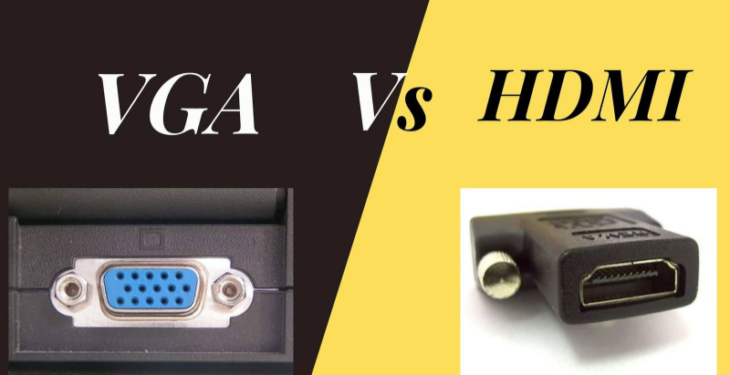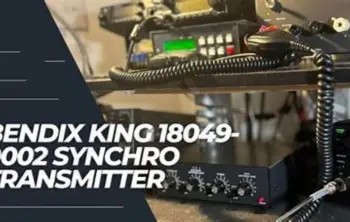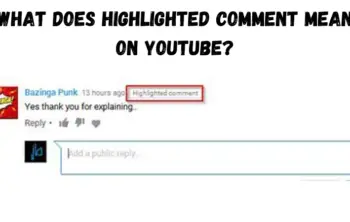In this article we will cover VGA vs HDMI are interface standards used for cables that connect devices — such as laptop computers and DVD players — to a display, like a TV, computer monitor or projector.
VGA is an older standard out of VGA vs HDMI that carries only a video signal. HDMI is the default cable standard for newer electronic devices, such as Blu-Ray players or LED TVs.
HDMI can carry both digital video and audio signals, all while encrypting data with HDCP. The video quality attained with a VGA cable is noticeably worse when compared to that of HDMI.
Even so, VGA vs HDMI, HDMI may be phased out soon, as USB 3.1’s versatile Type-C connector has the potential to replace the HDMI standard.
Read Article: What Does Collate Mean When Printing?
VGA vs HDMI Capabilities
VGA cables out of VGA vs HDMI were designed to carry only video signals from a device to a display. At the time they were first released (1987), analog signals were the norm.
When digital signals became more common, VGA cables were enhanced with converters to enable an analog-to-digital conversion. However, newer display devices used digital signals, too, so the process became a two-step conversion from digital to analog and back to digital, with concurrent degradation of the signal.
The analog signal would lose some information in the conversion to digital, and more information is lost when converted back to digital. In addition, VGA vs HDMI, analog signals carry less information than digital, so the original image such a scenario starts out as less “sharp” than what can be achieved in digital.
The HDMI standard allows for the transfer of both digital video and audio signals via the same interface (port) and cable, capable of providing high-definition (HD) video at resolutions of 1,920 x 1,200 pixels and 8 audio channels simultaneously.
Because it supports digital copy protection of all signals, HDMI cables are included for devices such as the Apple TV, Blu-Ray players, and game consoles, among other similar electronic products.
VGA vs HDMI Signal Quality
VGA cables are subject to crosstalk (signal interference from other cables) and length issues; for beyond about 4 feet, the analog video signal tends to break down. HDMI cables out of VGA vs HDMI are less sensitive to crosstalk but can suffer interference from electromagnetic fields.
To avoid this issue in tight places with several cables, the best HDMI cables offer thick insulation. However, most standard HDMI cables offer excellent connections and solid performance without the need for premium cables at premium prices.
VGA vs HDMI Input Lag
Input lag can refer to one of two things: the delay between a display device, such as a TV or monitor, receiving a signal and displaying it, or the delay between pressing a button in a video game and seeing the game execute the corresponding action.
VGA connections out of VGA vs HDMI generally exhibit less input lag than HDMI connections because they don’t apply post-processing on the input. Post-processing is similar to a Photoshop filter, in that it applies effects, such as depth of field, motion blur, and color correction.
While disabling post-processing reduces image quality slightly, it decreases input lag. There is an option on some TVs called “Game mode” which also disables post-processing.
Another factor in input lag is the use of adapters. Technically, every additional device introduces some delay because of the extra distance electrons have to travel, but this is negligible.
Using low-quality, VGA vs HDMI, unofficial adapters can increase input lag significantly as well.
VGA vs HDMI Compatibility
VGA cables are incompatible with HDMI ports, except with the use of converters. Even with converters, video signal quality is greatly compromised when using VGA cables, so they usually serve as a stop-gap measure.
Audio requires a separate cable. If HDMI cables are used with a VGA port, a converter unit and separate cable are needed to hook up the video display and provide the audio signal to a separate port.
VGA vs HDMI Audio
VGA can only transmit a single video signal without any audio, while HDMI can transmit up to 32 channels of digital audio. HDMI supports most high-definition audio signals like Dolby Digital, DTS, and DST.
If you use a VGA to HDMI converter to display from an older computer to a newer monitor, you’ll still need a second audio cable to transmit sound.
If you use an HDMI to VGA converter to display from a newer computer to an older monitor, a second audio cable is still needed if the monitor supports sound. If it doesn’t, you’ll need to connect your computer’s audio to separate speakers.
VGA vs HDMI Applications
The main advantage of a VGA connection nowadays is that older technology, such as projectors, are almost always compatible with them; however, VGA is now mostly outclassed and outperformed by newer connections outside of specifics, such as input lag.
HDMI connections are used by most PC gamers for their faster response times (the speed at which the image on the screen updates or shifts; the longer the response times, the more motion blur is visible), presence in most modern monitors, low-cost cables, as well as their ability to carry both audio and video.
However, HDMI 1.4 is limited to 4K resolution at 30 FPS, and while HDMI 2.0 supports 4K up to 60 FPS, the more recent version is not very common; furthermore, as previously stated, without “Game mode”, HDMI connections tend to have higher input lag.
Another application of HDMI connections is on Macs. While only post-2010 models of the Mac Mini, post-2012 models of the MacBook Pro, and late 2013 models of the Mac Pro come with HDMI ports for connecting to HDTVs and other displays, other models can still use a mini-DisplayPort to HDMI adapter to connect via HDMI port.
VGA vs HDMI Price
VGA cables, as they have fallen out of common use, are often inexpensive and can be found online easily. Converters might cost substantially more than the cables as they are more of a specialty item.
HDMI cables are more expensive than previous DVI standard cables, reflecting the fact that HDMI offers single-cable audiovisual feeds and higher quality.
Quality HDMI cable prices vary by manufacturer and length and can range from about $6 for a 6-foot cable, to about $10-$20 for a high-end 9-foot cable. Check Amazon.com for current prices and discounts.
Final Verdict
If you’re using a much older computer that only has a VGA port, you’re eventually going to have to use a VGA to HDMI converter to use newer displays.
However, you’re never going to be able to enjoy the much higher detail and refresh rates that a full HDMI port and cable offers. The only time you may need to use a VGA cable is if you’re still using older devices like vintage gaming consoles.
In this case you’ll want to keep a VGA cable with the device, as well as the required converters. Ultimately, you’re going to want to upgrade your desktop or laptop to a newer one that offers the best video output possible.
You’ll find that the latest video outputs use USB-C, but there are plenty of converters that allow you to output from USB-C to HDMI displays without any signal loss at all.






